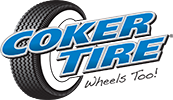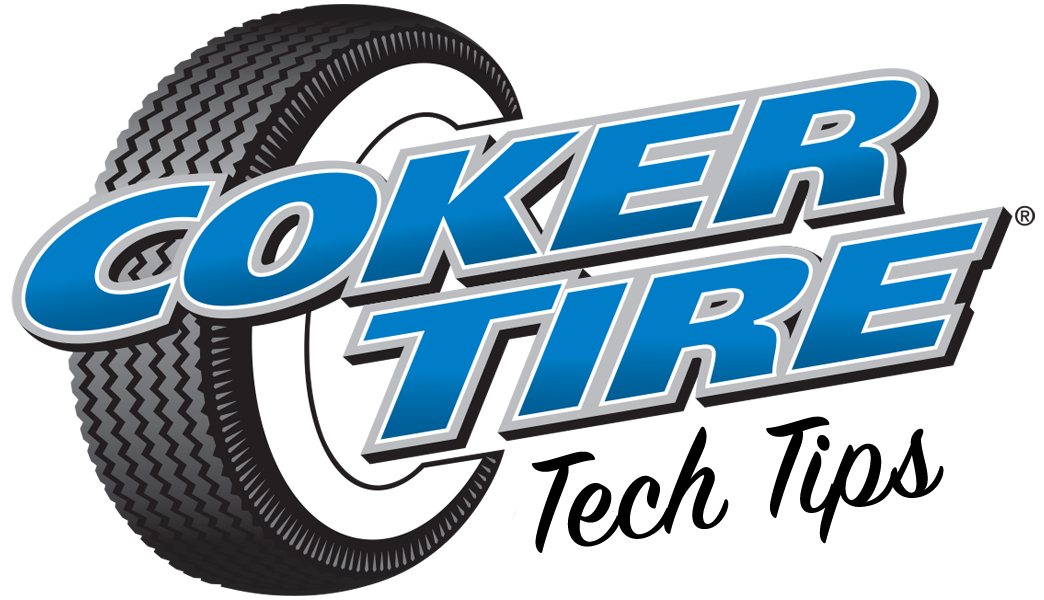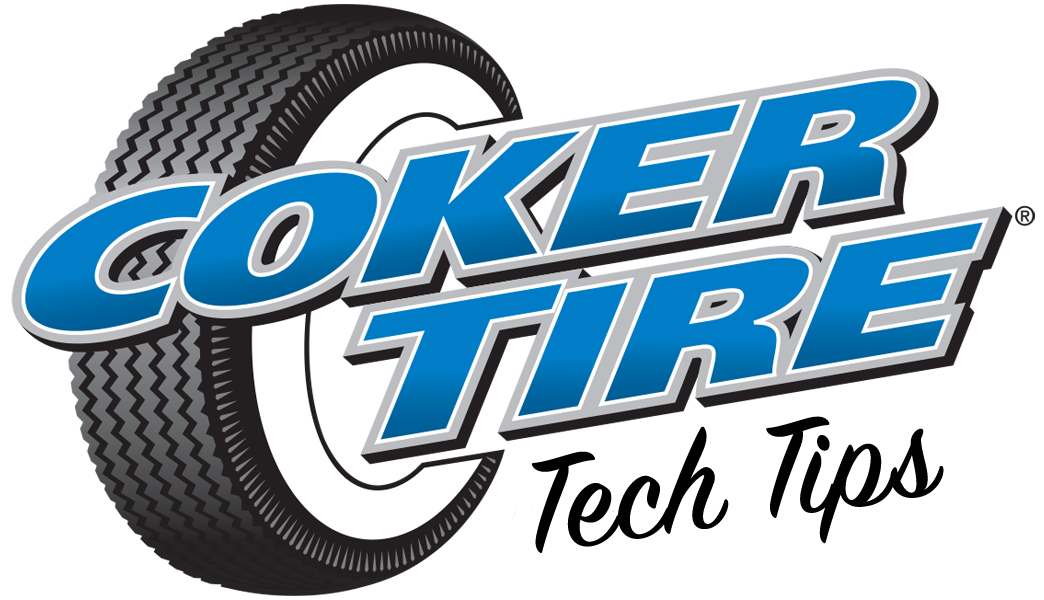Bias Ply or Radial--What's Right for your Ride?

It's a decision every car enthusiast must make when it comes time to buy new tires--bias ply or radial? The decision affects the authenticity of your vehicle and it affects the ride quality of your vehicle, but finding a happy medium has not always been an option until now. Coker Tire offers both bias ply and radial tires in its massive product selection, but it now offers a radial tire that features the pie-crust shoulder and narrow tread profile of a bias ply tire. So, what's right for your ride?
BIAS PLY TIRES
Bias Ply Tires are authentic for American cars built before 1976, but they don't offer the same handling characteristics as a modern radial. Everyone has an opinion on the upsides and downsides both bias ply and radial tires, but it all boils down to your preference. Our suggestion is to take a good look at your build style and work from there. If you're building a numbers-matching, nut-and-bolt restoration, bias ply tires are the way to go, because your goal is authenticity. Our bias ply tires are built in original molds, which have been refurbished to today's standards and utilize modern materials for a safe and correct tire. In addition to using authentic, original molds, Coker Tire also has licensing agreements to use popular brand names such as Firestone, BFGoodrich and U.S. Royal.
Inside a bias ply tire, the cords are run diagonally from bead to bead, overlapping in a crisscross pattern. The bias ply tire progressed over the time it was used in auto manufacturing, but the general construction techniques stayed the same. For instance, the Firestone 6.00-16 that rolled beneath countless passenger cars in the '30s and '40s features the same basic construction as the Firestone Wide Oval tires that were used on millions of muscle cars from 1967 to 1974. Bias ply tires typically follow the ruts and breaks in the road surface, so it provides a wandering sensation if you're not accustomed to driving an old car.
RADIAL TIRES
Starting in the 1970's, many American auto manufacturers began making the switch from bias ply tires to radial tires. Today, radial tires are still in use--and while the tire technology has grown in leaps and bounds since the '70s, each tire constructed using the same basic principles. Coker Tire was the first company to introduce a wide whitewall radial tire, and did so in 1994. It changed the face of the antique tire market, and the line of nostalgia radials continues to grow. Now, Coker offers whitewalls, redlines and gold line tires in both bias ply and radial construction.
The cords on a radial tire run straight across the tire, from one bead to the other. The radial cord layout, in addition to steel belting that rides beneath the tread surface helps stabilize the sidewall and tread patch, while allowing the tire to better conform to the road's surface. While a bias ply tire follows the ruts and breaks in the road, a radial tire will skim across the top and soak up some of the transitions. This makes for a smoother ride, and allows you to release the white-knuckle grip on the steering wheel on a rough road. If you're building a car that will see thousands of miles each year, your best bet is likely a radial, as you will enjoy the smoother ride quality and longer tread life.
BEST OF BOTH WORLDS--THE BIAS LOOK RADIAL
Coker Tire revolutionized the tire industry in 2013 by introducing the bias look radial--a tire that has the authentic appearance of a bias ply tire with the internal construction and handling of a radial. The product was a huge hit at the SEMA Show, where it won the Best New Product award in the Tires & Accessories Category. The new tire is under the American Classic brand, and it's available in nine sizes to fit a multitude of applications, most of which are from the late '40s, '50s and early '60s. Coker Tire offers the American Classic Bias Look Radial in whitewall and blackwall configurations. The tires are getting great feedback, and we love seeing them pop up on the show field on everything from Tri-Five Chevys and Corvettes to Ford Thunderbirds and Cadillacs.
 It's a decision every car enthusiast must make when it comes time to buy new tires--bias ply or radial? The decision affects the authenticity of your vehicle and it affects the ride quality of your vehicle, but finding a happy medium has not always been an option until now. Coker Tire offers both bias ply and radial tires in its massive product selection, but it now offers a radial tire that features the pie-crust shoulder and narrow tread profile of a bias ply tire. So, what's right for your ride? Keep reading to find out.
BIAS PLY TIRES
Bias ply tires are authentic for American cars built before 1976, but they don�t offer the same handling characteristics as a modern radial. Everyone has an opinion on the upsides and downsides both bias ply and radial tires, but it all boils down to your preference. Our suggestion is to take a good look at your build style and work from there. If you�re building a numbers-matching, nut-and-bolt restoration, bias ply tires are the way to go, because your goal is authenticity. Our bias ply tires are built in original molds, which have been refurbished to today's standards. In addition to using authentic, original molds, Coker Tire also has licensing agreements to use popular brand names such as Firestone, BFGoodrich and U.S. Royal.
Inside a bias ply tire, the cords are run diagonally from bead to bead, overlapping in a crisscross pattern. The bias ply tire progressed over the time it was used in auto manufacturing, but the general construction techniques stayed the same. For instance, the Firestone 6.00-16 that rolled beneath countless passenger cars in the '30s and '40s features the same basic construction as the Firestone Wide Oval tires that were used on millions of muscle cars from 1967 to 1974. Bias ply tires typically follow the ruts and breaks in the road surface, so it provides a wandering sensation if you're not accustomed to driving an old car.
RADIAL TIRES
Starting in the 1970's many American auto manufacturers began making the switch from bias ply tires to radial tires. Today, radial tires are still in use--and while the tire technology has grown in leaps and bounds since the '70s, each tire constructed using the same basic principles. Coker Tire was the first company to introduce a wide whitewall radial tire, and did so in 1994. It changed the face of the antique tire market, and the line of nostalgia radials continues to grow. Now, Coker offers whitewalls, redlines and gold line tires in both bias ply and radial construction.
The cords on a radial tire run straight across the tire, from one bead to the other. The radial cord layout, in addition to steel belting that rides beneath the tread surface helps stabilize the sidewall and tread patch, while allowing the tire to better conform to the road�s surface. While a bias ply tire follows the ruts and breaks in the road, a radial tire will skim across the top and soak up some of the transitions. This makes for a smoother ride, and allows you to release the white-knuckle grip on the steering wheel on a rough road. If you're building a car that will see thousands of miles each year, your best bet is likely a radial, as you will enjoy the smoother ride quality and longer tread life.
BEST OF BOTH WORLDS--THE BIAS LOOK RADIAL
Coker Tire revolutionized the tire industry in 2013 by introducing the bias look radial--a tire that has the authentic appearance of a bias ply tire with the internal construction and handling of a radial. The product was a huge hit at the SEMA Show, where it won the Best New Product award in the Tires & Accessories Category. The new tire is under the American Classic brand, and it's available in nine sizes to fit a multitude of applications, most of which are from the late '40s, '50s and early '60s. Coker Tire offers the American Classic bias look radial in whitewall and blackwall configurations. The tires are getting great feedback, and we're already seeing them pop up on the show field on everything from Tri-Five Chevys and Corvettes to Ford Thunderbirds and Cadillacs.
[products]
It's a decision every car enthusiast must make when it comes time to buy new tires--bias ply or radial? The decision affects the authenticity of your vehicle and it affects the ride quality of your vehicle, but finding a happy medium has not always been an option until now. Coker Tire offers both bias ply and radial tires in its massive product selection, but it now offers a radial tire that features the pie-crust shoulder and narrow tread profile of a bias ply tire. So, what's right for your ride? Keep reading to find out.
BIAS PLY TIRES
Bias ply tires are authentic for American cars built before 1976, but they don�t offer the same handling characteristics as a modern radial. Everyone has an opinion on the upsides and downsides both bias ply and radial tires, but it all boils down to your preference. Our suggestion is to take a good look at your build style and work from there. If you�re building a numbers-matching, nut-and-bolt restoration, bias ply tires are the way to go, because your goal is authenticity. Our bias ply tires are built in original molds, which have been refurbished to today's standards. In addition to using authentic, original molds, Coker Tire also has licensing agreements to use popular brand names such as Firestone, BFGoodrich and U.S. Royal.
Inside a bias ply tire, the cords are run diagonally from bead to bead, overlapping in a crisscross pattern. The bias ply tire progressed over the time it was used in auto manufacturing, but the general construction techniques stayed the same. For instance, the Firestone 6.00-16 that rolled beneath countless passenger cars in the '30s and '40s features the same basic construction as the Firestone Wide Oval tires that were used on millions of muscle cars from 1967 to 1974. Bias ply tires typically follow the ruts and breaks in the road surface, so it provides a wandering sensation if you're not accustomed to driving an old car.
RADIAL TIRES
Starting in the 1970's many American auto manufacturers began making the switch from bias ply tires to radial tires. Today, radial tires are still in use--and while the tire technology has grown in leaps and bounds since the '70s, each tire constructed using the same basic principles. Coker Tire was the first company to introduce a wide whitewall radial tire, and did so in 1994. It changed the face of the antique tire market, and the line of nostalgia radials continues to grow. Now, Coker offers whitewalls, redlines and gold line tires in both bias ply and radial construction.
The cords on a radial tire run straight across the tire, from one bead to the other. The radial cord layout, in addition to steel belting that rides beneath the tread surface helps stabilize the sidewall and tread patch, while allowing the tire to better conform to the road�s surface. While a bias ply tire follows the ruts and breaks in the road, a radial tire will skim across the top and soak up some of the transitions. This makes for a smoother ride, and allows you to release the white-knuckle grip on the steering wheel on a rough road. If you're building a car that will see thousands of miles each year, your best bet is likely a radial, as you will enjoy the smoother ride quality and longer tread life.
BEST OF BOTH WORLDS--THE BIAS LOOK RADIAL
Coker Tire revolutionized the tire industry in 2013 by introducing the bias look radial--a tire that has the authentic appearance of a bias ply tire with the internal construction and handling of a radial. The product was a huge hit at the SEMA Show, where it won the Best New Product award in the Tires & Accessories Category. The new tire is under the American Classic brand, and it's available in nine sizes to fit a multitude of applications, most of which are from the late '40s, '50s and early '60s. Coker Tire offers the American Classic bias look radial in whitewall and blackwall configurations. The tires are getting great feedback, and we're already seeing them pop up on the show field on everything from Tri-Five Chevys and Corvettes to Ford Thunderbirds and Cadillacs.
[products]

